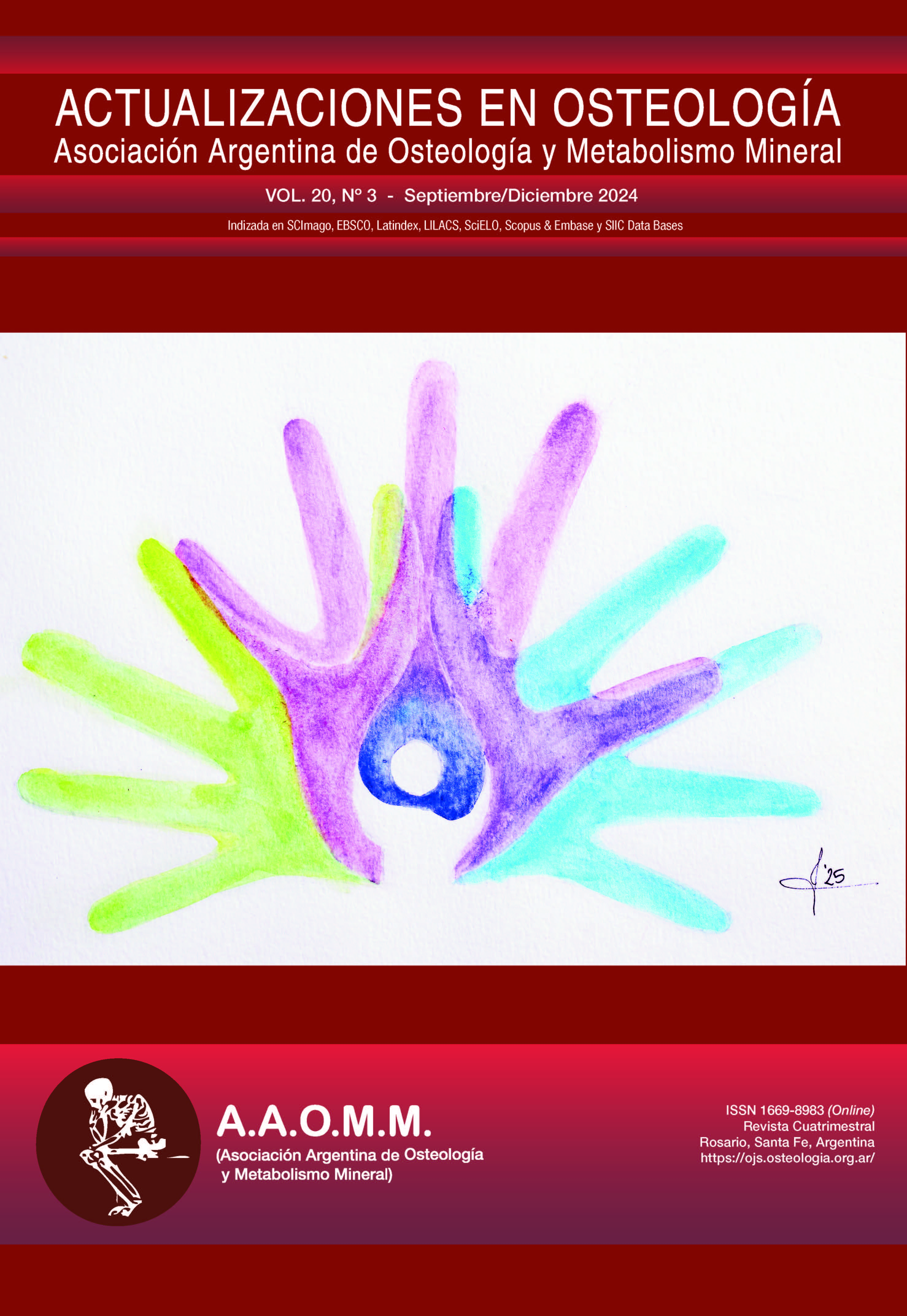Calcinosis tumoral en paciente con enfermedad renal crónica Tumoral calcinosis in a patient with chronic kidney disease
Main Article Content
Abstract
Introduction: Chronic kidney disease (CKD) can cause disturbances in mineral and bone metabolism, manifesting as abnormalities in serum levels of calcium, phosphorus, PTH, or vitamin D, and may lead to vascular and soft tissue calcification. Calciphylaxis, a life-threatening complication associated with CKD, results from calcium deposition in the dermal and adipose microvasculature. Uremic tumoral calcinosis (UTC) is another common complication in patients undergoing hemodialysis.
Clinical Case: A 27-year-old female patient was referred for a large mass in her right shoulder, characterized by 4 months of pain. Her medical history includes hemolytic uremic syndrome at 8 months of age, requiring hemodialysis. At 16 years old, she underwent a kidney transplant until the age of 21, after which she continued with hemodialysis due to transplant rejection. A CT scan and MRI of the right shoulder revealed a lesion compatible with UTC. Biochemical evaluation showed elevated phosphate levels with an increased calcium-phosphate product. Due to the functional impairment it caused, marginal surgical resection was decided. The specimen was sent for delayed pathological examination, confirming the diagnosis.
Conclusion: The management of UTC focuses on improving phosphorus, calcium, and parathyroid hormone levels through various strategies. Vascular evaluation is crucial due to the high cardiovascular risk in these patients, which is one of the leading causes of mortality in CKD.
Keywords: calcinosis, chronic renal disease, hyperphosphatemia.
Article Details
Derechos de autor: Actualizaciones en Osteología es la revista oficial de la Asociación Argentina de Osteología y Metabolismo Mineral (AAOMM) que posee los derechos de autor de todo el material publicado en dicha revista.

